niponica is a web magazine that introduces modern Japan to people all over the world.
2019 NO.27
The Olympics Are Coming to Tokyo

Gaining Recognition in Global Sports
Japanese Martial Arts
How to get the most out of watching karate: beginners guide
Highlights of kata
Learn more about the format of the Olympic karate competition
Ten representatives of countries and regions will compete in the kata event at the Olympic Games Tokyo 2020. The athletes who advance to the finals will perform four times in total.
What to watch for
Contestants may use each kata only once in the course of the competition. Make sure to pay attention to the strategy and tactics of the contestants as they determine when to perform their best kata.
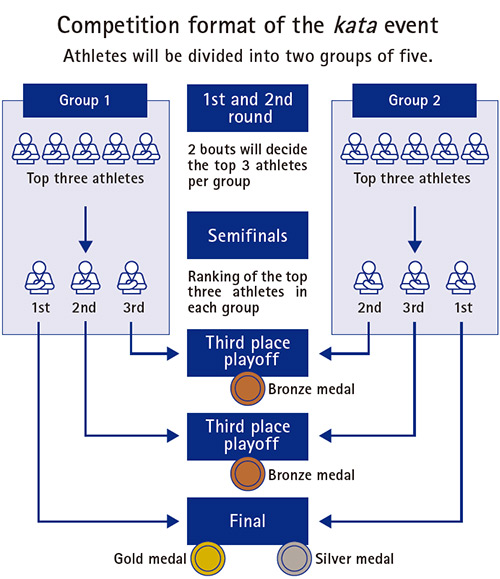
Based on the ranking after the semifinals, third place playoffs will be held between the 2nd-ranked athlete of Group 1 and the 3rd ranked athlete of Group 2, and between the 3rd ranked athlete of Group 1 and the 2nd ranked athlete of Group 2. Then the final match between the 1st rank will be held.
Don’t miss the timing of kiai
In kata competitions, the athlete utters a shout of power called kiai in the moment the imaginary opponent is defeated. The timing of kiai differs depending on the kata, but usually it is the peak moment of the kata, when the contestant utters a shout while executing a major technique, such as punching or kicking.
Kiai in punching
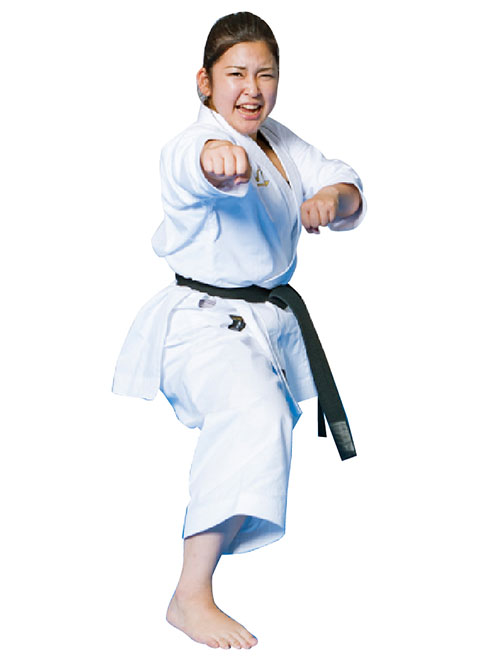
Kiai in kicking
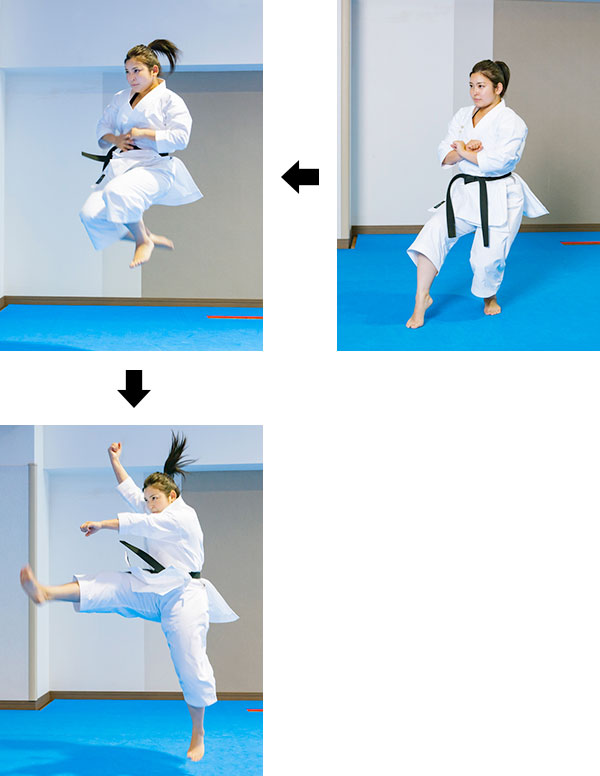
What to watch for
The kiai serves to punctuate the delivery of several successive techniques. For the contestants, it is a strenuous moment. Make sure to applaud and cheer them on the successful delivery of a technique.
The athlete jumps from a blocking position and performs the kata in mid-air.
Enjoy diversity in styles
There are 98 types of kata that can be used in the competition. They are classified in the four main karate styles of Shito-ryu, Goju-ryu, Shotokan-ryu, and Wado-ryu. Today, most of the performed kata are from Shito-ryu and Gojuryu. The differences in the movements depending on the style are another enjoyable aspect to watch for in the kata performances.
Shito-ryu “Chatanyara Kushanku”
This kata is distinguished by swift straight movements that envision an opponent at a slight distance. The kata is known for the speed and sharpness of movement.
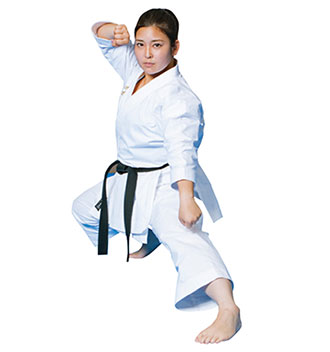
Goju-ryu “Suparimpei”
Curved movements performed while dodging the attacks of an imaginary opponent in close combat are the main feature of this technique, which is known for dynamic flashes amid lithe movements.
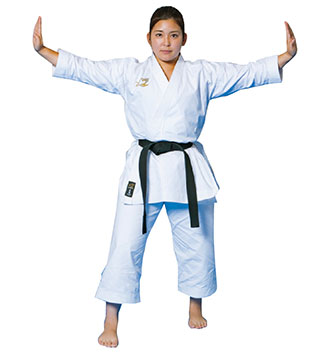
Kawasaki Emiko
Winner of the Female Kata title at the 59th All Japan Student Karate Championship and the title at the 10th Asian Junior & Cadet Karate Championship (Photo: Osaka Satoshi)
What to watch for
Imagine a virtual opponent with the contestant’s movements to enjoy the performance even more. Watching the performance from behind the contestant will give you the feeling of fighting together.
Highlights of kumite
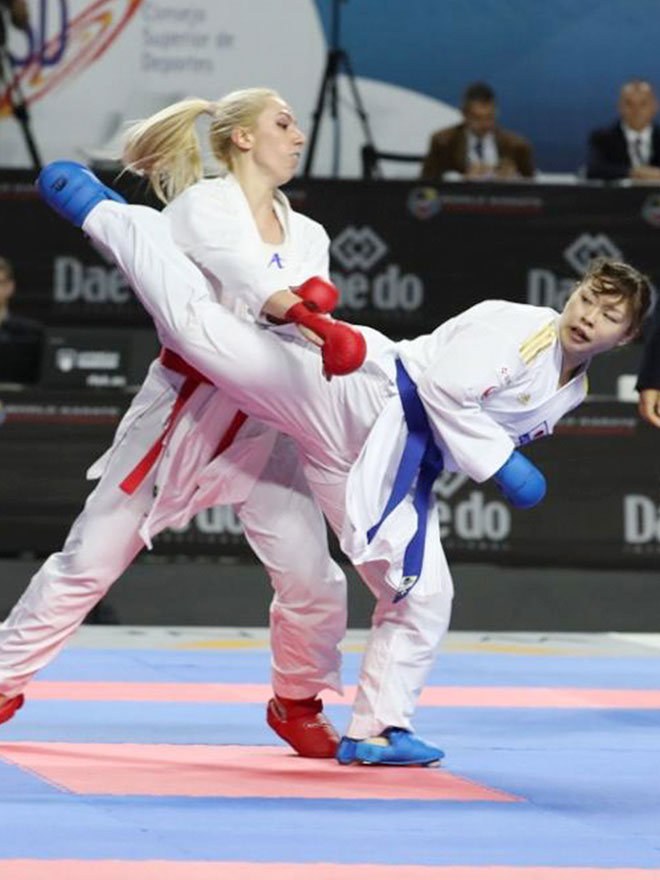
Uekusa Ayumi (right) engages in kumite combat with Eleni Chatzilliadou of Greece
Photo courtesy of Karatedo Magazine, JKFan
The kumite competition will be conducted in a tournament format, with two contestants facing each other and the winner advancing to the next stage. The goal is to score points by applying three attack techniques (punching, kicking, and striking) to determined places on the opponent’s body. Unlike full-contact combat, however, the contestants will not actually deliver blows to each other, but will execute their techniques by terminating them just before impact (a practice known as sundome).
One of the highlights of kumite is the practice of strategically using distance and time. Maai is a term that refers to the distance maintained between opponents when they do not attack each other or during attack so that they can protect themselves. When the combat enters into a maai, things can change in an instant, so make sure not to miss that instant.





